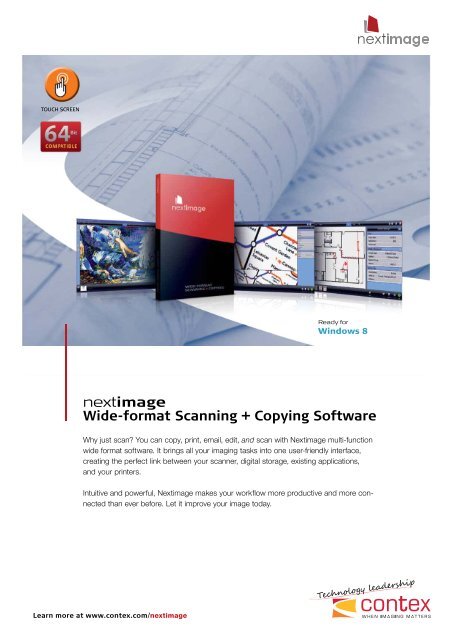
“Contex builds intelligence into Nextimage Repro that simplifies the scanning, copying and printing process,” says Morten Nielsen, marketing director, Contex A/S. “By developing an application printer driver for the HP PageWide XL printer portfolio, we are making it possible for Contex customers to get the most accurate output, while. Contex uses this information to create statistics that help Contex improve the Site and make it more compatible with the technology used by our Site visitors. Collection and use of Personal Information collected by placing a cookie. Contex may obtain information about you by installing a “tag” on your computer’s hard drive. Find Contex technical support for your Contex scanners and software here or contact your reseller for direct help. Use the drop down box to reach your products support page and access relevant downloads, drivers and support. If your looking for the Restricted support for our Partners go here.
-->As shown in the Processing IRPs in Layered Drivers figure, a file system is a two-part driver:

Contex A/s Driver Review


Contex A/s Drivers
A file system driver (FSD), which executes in the context of a user-mode thread that calls an I/O system service
The I/O manager sends the corresponding IRP to the FSD. If the FSD sets up a completion routine for an IRP, its completion routine is not necessarily called in the original user-mode thread's context.
A set of file system threads, and possibly an FSP (file system process)
An FSD can create a set of driver-dedicated system threads, but most FSDs use system worker threads in order to get work done without tying up user-mode threads that make I/O requests. Any FSD might set up its own process address space in which its driver-dedicated threads execute, but the system-supplied FSDs avoid this practice to conserve system memory.
File systems generally use system worker threads to set up and manage internal work queues of IRPs that they send to one or more lower-level drivers, possibly for different devices.
While the lowest-level driver shown in the Processing IRPs in Layered Drivers figure processes each IRP in stages through a set of discrete, driver-supplied routines, it does not use system threads as the file system does. A lowest-level driver does not need its own thread context unless setting up its device for I/O is such a protracted process that it has a noticeable effect on system performance. Few lowest-level or intermediate drivers need to set up their own driver-dedicated or device-dedicated system threads, and those that do pay a performance penalty caused by context switches to their threads.
Most kernel-mode drivers, like the physical device driver in the Processing IRPs in Layered Drivers figure, execute in an arbitrary thread context: that of whatever thread happens to be current when they are called to process an IRP. Consequently, drivers usually maintain state about their I/O operations and the devices they service in a driver-defined part of their device objects, called a device extension.


Comments are closed.